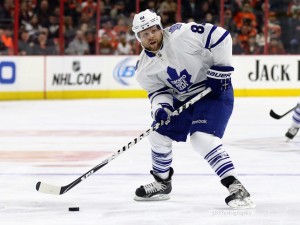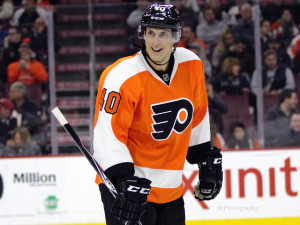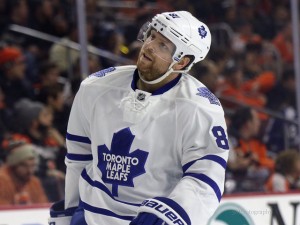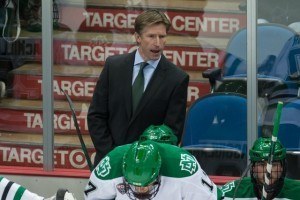
The worst kept secret in Toronto regarding the Leafs is that Phil Kessel is likely to be traded. With the team going into full rebuild mode, it makes sense for them to deal their most productive player while he’s still productive. However, there are two huge stumbling blocks to a potential trade.
The first is that Kessel has seven years remaining on his contract in which he is owed $8M/year. Few teams have that type of cap space floating around to accommodate that contract. The second is that Kessel has a limited NTC in his contract that allows him to list eight teams he will accept a trade to.
On Saturday, Bob McKenzie reported the list that Kessel presented to the Leafs, and the Flyers were on it:
“Kessel’s limited NTC is believed to include eight teams he can be traded to. Prior to the trade deadline, TSN reported those eight teams were believed to be: Boston; Chicago; Los Angeles; Minnesota; Montreal; New York Rangers; Philadelphia; and Pittsburgh.”
Kessel would be a tremendous addition to the Philadelphia offense. On Giroux’s wing, Kessel could easily pot 50 goals a season. It would also allow Jakub Voracek to drop down to the second line and give it some needed scoring punch. Over the last four years, Phil Kessel is the highest scoring RW in the league, and is 6th among all forwards.
While Kessel would be a nice addition, there are a number of reasons why you won’t see him in orange and black any time soon.
The Pesky Salary Cap

Heading into next season, the Flyers have $63.83M already committed to 11 forwards, 7 defensemen, and 1 goalie (not including Chris Pronger). With the cap scheduled to be around $71M, that leaves them with $7.17M to re-sign Michael Del Zotto, add two forwards, and a backup goalie. That’s possible (and there will likely be some bodies and cap dollars departing from the crowded defense), but it doesn’t leave much room to improve the roster.
To make Kessel in Philadelphia a possibility, Philadelphia would have to dump cap dollars to accommodate him. Considering the deep pockets of Leafs’ ownership, they could take on the likes of Andrew MacDonald or Vinny Lecavalier to get a deal done, but it would come at a cost. The Flyers would likely have to pony up more valuable assets to convince the Leafs compared to a deal with a team that could better absorb Kessel’s contract.
Timing Doesn’t Make Sense

Barring a miracle, the Flyers will not be in a position to contend in the next year or two. It will take another two or three seasons when the defense has been rebuilt with young faces for the Flyers to be considered true contenders. By then, Kessel will be 30 years old (or older), and on the decline.
Studies have confirmed that a player’s goalscoring and point producing peak usually occurs around the age of 25. With goalscoring, it tends to be a bit earlier. So far, Kessel’s career has indicated the very same with his top GPG season coming at 21 and best PPG season coming at age 25.
Kessel will still be a productive player at the age of 30. He’ll still be putting up at least 50-60 points over the next few years, but his best years are likely behind him. A team acquiring him should be in a position to contend right now, with Kessel serving as the final piece to the puzzle to put a team over the top. That is not the position the Flyers are in.
Doesn’t Fit Dave Hakstol’s Vision
It’s hard to say exactly what Dave Hakstol’s plan for the Flyers is considering he hasn’t had a chance to work with any of the players yet. At North Dakota, he won with teams that played a number of different styles. He adapted his system to what suited the team he was working with. However, there was one theme that appeared universal throughout: an emphasis on playing a structured game, and play away from the puck.
Bill Meltzer had the following to say about Hakstol’s time at North Dakota:
At UND, there were specific things players had to do if they wanted to get ice time. They had to keep their feet moving (see above). They had to be responsible without the puck and provide support. They had were expected to strike a balance between positional and physical play. Defensemen were expected to get the puck to the forwards and make intelligent plays to support the rush and forwards, in turn, were expected to backcheck diligently and dig out pucks when defensemen had their check pinned to the boards. Everyone was expected to find the dangerous man in the defensive zone and to block shots on an almost NHL-like basis.”

In addition, look at the players Hakstol coached at North Dakota that went on to have the most success in the NHL: Jonathan Toews, TJ Oshie, Travis Zajac, and Zach Parise. The common thread with all of them is that they are all very responsible two-way players.
If you look at the things Meltzer mentions players needed to do to get ice time, Kessel doesn’t do many of them. His play away from the puck, whether defensive, positional, or physicality, is the weakest part of his game. Of course, if you’re gifted a player of Kessel’s talents you find a way to use them and fit him in your system. However, it’s far from a natural fit.
Considering all of the above, it really doesn’t make sense for the Flyers to pursue a trade of Phil Kessel. The timing, cost, fit, and salary cap issues just don’t fit.